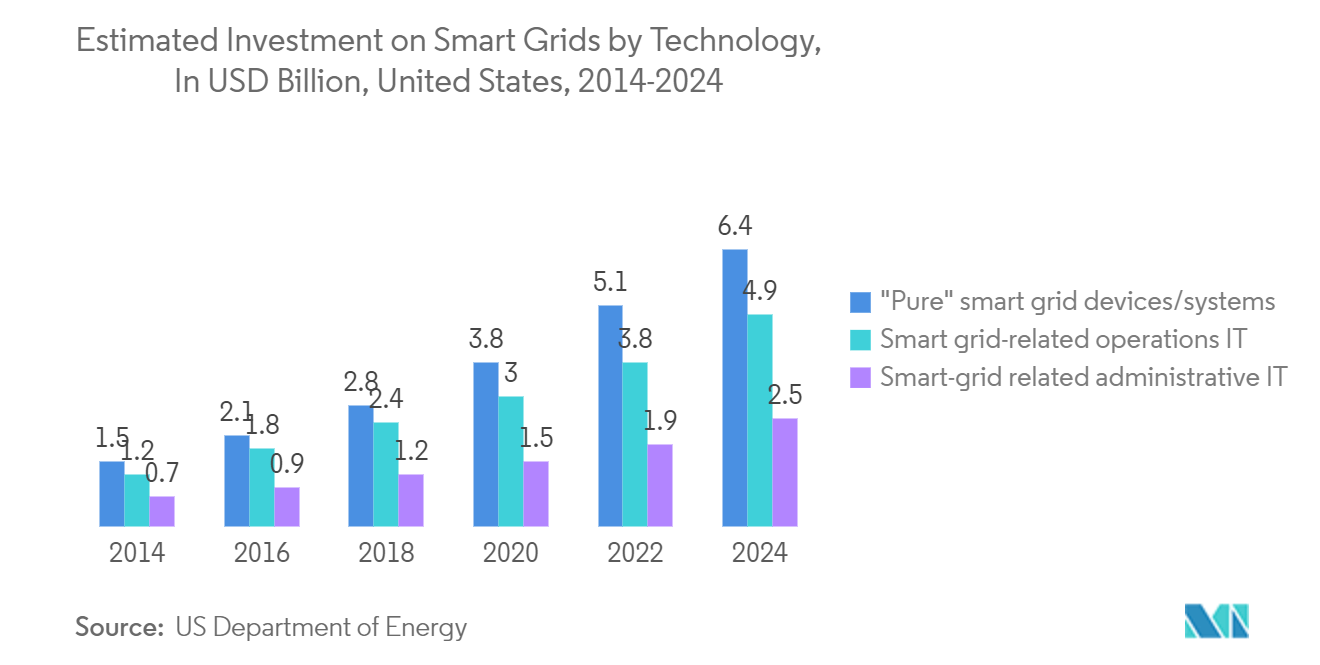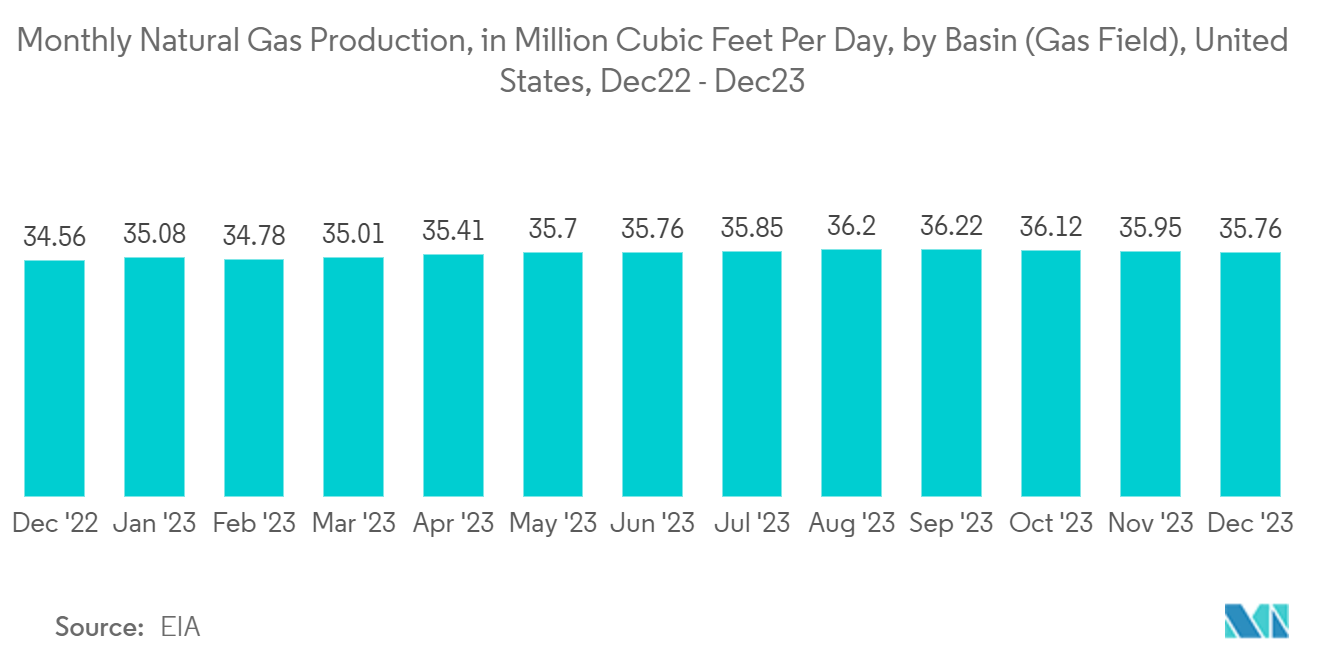Market Trends of US Residential Smart Meters Industry
Increased Investments in Smart Grid Projects to Drive the Market
- Utilities in the country are increasingly adopting technologies, like artificial intelligence and digital twinning, coupled with increased government support and initiatives, further attracting investments in innovative grid projects and driving the studied market.
- Also, according to the US Department of Energy, the annual investment in smart grids in the United States from 2014 to 2024 is broken down by technology. By 2024, investment in intelligent grid devices or systems, such as advanced metering infrastructure, was forecasted to reach USD 6.4 billion.
- In October 2023, The US Department of Energy earmarked USD 3.46 billion for 58 projects spanning 44 states aimed at fortifying the resilience and reliability of the nation’s electric grid. The initiatives, underpinned by the Bipartisan Infrastructure Law, will leverage a total investment of over USD 8 billion from federal and private sources.
- The adoption of smart meters, a significant measure of future-ready technologies, paves the way for the smart grid by enabling two-way real-time communication between DISCOMs and consumers through GPRS technologies.
- The power grid infrastructure is progressively becoming more digitized and connected, ensuring reliable and secure critical digital communications flow. Thus, smart grid infrastructure is vital in a power substation or residential setting. Smart meters enable the real-time measurements needed to monitor equipment health, grid congestion, and stability, and system control forms an integral part of smart grids.
- In the United States, smart meters have been deployed in over half of the market. However, the largest single-country market is expected to be the United States, accounting for most of the global smart grid market for equipment and services. Within the broader intelligent grid framework, the most significant opportunities for growth are anticipated in analytic services and smart meters.

Smart Gas Meter to Witness Major Growth
- Growing measures toward optimizing operational efficiencies across utilities in response to overall consumer demand are leading to the growth of the US smart gas meters market. Additionally, the shifting trend toward the digital economy and information society is a substantial factor responsible for the business growth in the region. In addition to improving commercial and residential construction activity, demand for industry products has benefited from a larger number of utilities converting to smart grids. In the past few years, the United States has witnessed various new project announcements from larger utilities.
- The number of houses represents the market potential for utilities providing gas. As more new houses are built, a growing proportion of homes will have smart meters installed as Advanced Metering Infrastructure (AMI), which continues its widespread adoption across both residential and commercial applications. The residential end-user is expected to offer a huge market for smart gas meters, given the number of households that individually have gas meters stalled. For instance, according to the US Census Bureau, the number of households increased and reached 131.2 million in 2022. However, the growth of households looks stagnant during the forecast period, posing a potential threat to industry revenue growth.
- According to EIA, natural gas is among the primary energy sources in the residential sector as it is used widely to heat buildings and water, dry clothes, and cook. About half of the households in the United States use natural gas for space and water heating. Additionally, in 2022, the residential sector made up approximately 15% of the total natural gas consumption in the United States. Such a rise in natural gas is likely to bring demand in the market.
- The industrial sector was responsible for about 26% of the total consumption, while the commercial sector accounted for approximately 11%. It is important to highlight that in 2022, the United States reached a significant milestone by achieving a record-breaking natural gas consumption of 33.4 quads. This accomplishment can primarily be attributed to the increased utilization of natural gas, which has consistently surpassed all other sectors for the past five years.
- According to the Energy Institute, there was a steady increase in natural gas production in the United States over the past decade, reaching a peak of almost 979 billion cubic meters in 2022. Furthermore, according to the Drilling Productivity Report by EIA, the monthly gas production in the Appalachia basin alone is estimated to be 35.8 million cubic feet per day in December 2023. This increase in production has been in response to a growing demand for natural gas, especially following the 2008 Recession. Consequently, it is expected that there will be a greater need for smart gas meters.


